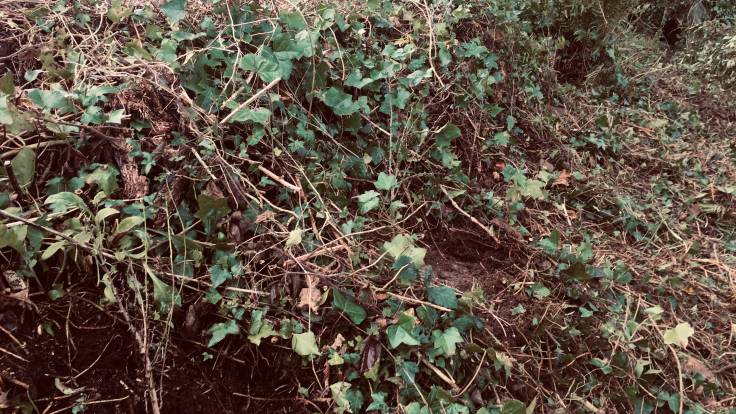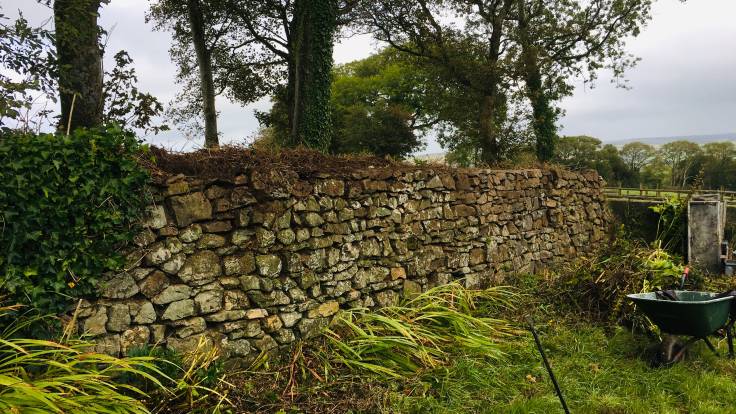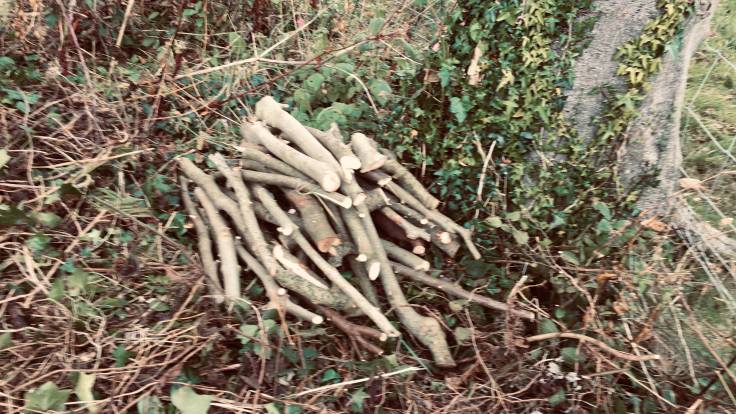
Stormy clouds over a Pembrokeshire farm
Creating wildlife habitat in a farm garden
I’m very lucky to be working on a large farm garden in Pembrokeshire. It’s mostly been clearing bramble and nettles from well-established perennial shrubs and a lovely range of aromatic herbs such as Southernwood and oregano.
I’ve also started weeding and planting Hawthorn hedges, which are a top wildlife plant: as a habitat protected by thorns, as food source for larval stage of inverterbates, for the early May blossom for pollinators, and for the jewelled red fruit in autumn. One of my favourite plants, you should always have at least one hawthorn if you can.

Hawthorn hedge barely visible, they’ll need a lot of mulching to get them established in that ivy
A lot of the planting is into quite wild areas, so it’s good to use a thick mulch (such as cardboard, bark or woodchip) to give the young hawthorn a chance to get established.

Ivy makes a great habitat, although bare stone walls are a great habitat as well
There is a beautiful south-facing stone wall at the back of the garden. I cleared the ivy off the wall and felt bad, because it’s a great wildlife plant in its own right (habitat, late flowers, fruit), I endeavoured to create some more wildlife friendly features: the bare stone wall for lizards and a couple of log piles for all sorts of inhabitants.

A logpile is one of the easiest wildlife features to add
To get some more wildlife gardening ideas, I can @Kate_Bradbury’s book Wildlife Gardening: For Everyone and Everything. It gives a great overview of different species and possible habitats you can create.